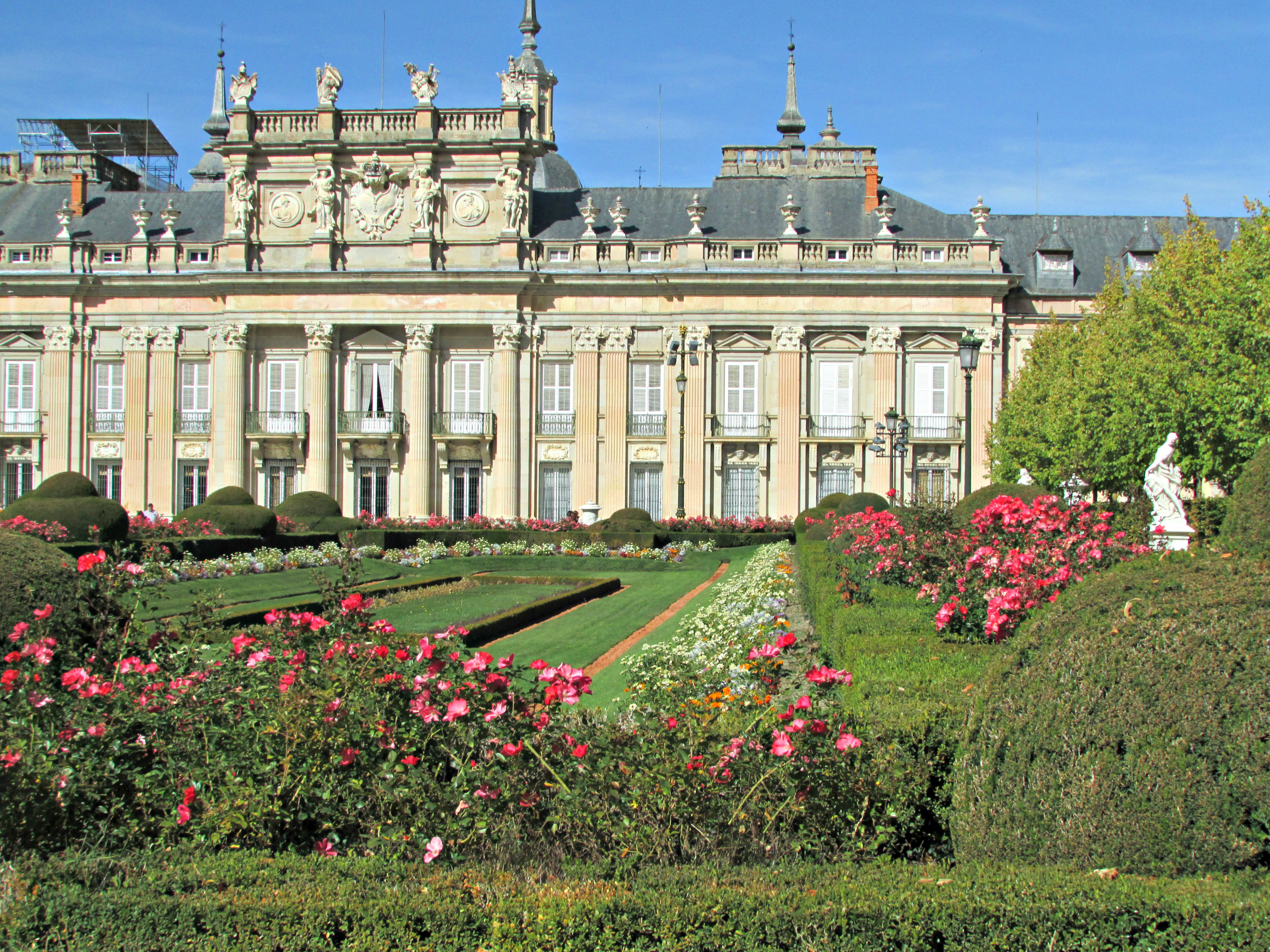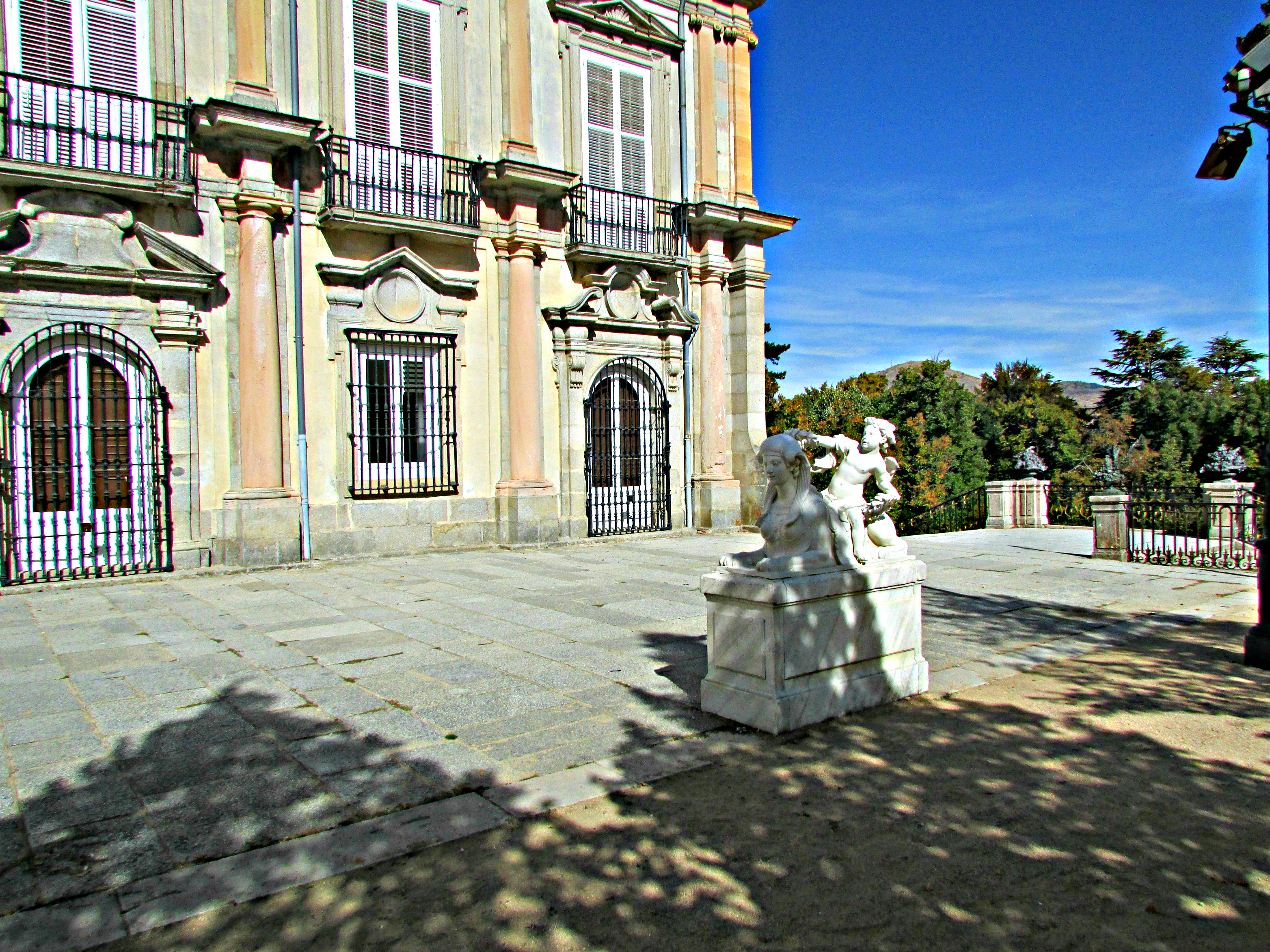Royalty in San Ildefonso, Spain – Royal Palace of La Granja and Royal Collegiate Church
Explore the elegance of La Granja de San Ildefonso’s Royal Palace and Collegiate Church, showcasing history, architecture, and stunning gardens.

Four Part Series on Royal Residences and Gardens Near Madrid, Spain – Part Three
Walking down the front steps of our hotel in Segovia, we head toward a waiting taxi. The driver smiles when I tell him where we are headed…La Granja de San Ildefonso to tour the Royal Palace of La Granja and the Royal Collegiate Church.
As we jump into the back of the taxi, our driver turns up the volume on the radio and waves to the other taxi drivers. We move swiftly through the twisting narrow streets past the aqueduct to the highway. The day promises to be sunny and warm, perfect for exploring.
Entering the Town
San Ildefonso, where La Granja is located, is 11km from Segovia, a quick drive. As we approach the little town, the driver slows down, points to the open gate we are about to drive through and says, “Muy magnifica.” We agree.
The main entrance to the town is through the Puerta de Segovia which is made up of three sections of wrought-iron railings and embellished with ornate decorations. Heading down the avenue, we comment on the magnificent buildings surrounding us. Smiling, the driver looks in his rearview mirror catching my eye, “Magnifica” he says. A minute later he pulls over to the curb and stops the car. Jumping out of the taxi it is my turn to say, “Muy magnifica.”

The Royal Palace of La Granja with its gardens are straight ahead, The Royal Collegiate Church is to the right of the palace.
To our right is the Plaza, its enormous trees dwarf everything in sight. Waving to the driver we walk toward the palace.
Retirement Retreat to the Royal Palace of La Granja – Brief History

Location, location, location…King Philip V certainly understood the importance of location. La Granja, located in the foothills of the Guadarrama Mountains, provides a comfortable climate for a summer retreat. Before Phillip became King in 1700, at the age of seventeen, he enjoyed hunting in this area. Once crowned, he decided it would make a great retirement spot. He purchased the lodge owned by a group of Hieronymites monks and then proceeded to add additional land where spectacular gardens would eventually be created.
Philip’s grandfather was King Louis XIV. Born at Versailles, Philip spent much of his childhood there. I suspect his love for majestic gardens must have started in that spectacular setting. Philip V abdicated in January of 1724 and his son became King Louis I. Due to his son’s death 7 months later, Philip V became King for a second time. La Granja became a Royal Seat. This meant that it needed to be enlarged and that the gardens needed to reflect royal status.
The Royal Palace of La Granja – The Exterior
Approaching the palace, it appears rather plain but it is hiding a secret. We found its true beauty located behind, facing the gardens. The Spanish architect Teodore Ardemans contributed to the original design of the palace. Several famous Italian architects of the day, finished the work blending the two styles together into what we see today. The colors are soft and muted. The light stone and granite contrasts nicely with the dark slate tiles of the roof.

The central part of the palace’s facade which includes the King’s bedroom, was designed by the Italian architect Juvarra who also designed the Royal Palace in Madrid. With carved columns, ornate pilasters, and elegant balconies, it is baroque at its finest. Glancing up to the balcony of the King’s bedroom, we acknowledge he had a glorious view of the Palace Parterre along with the surrounding fountains and sculptures.

Strolling along the broad terrace we approach the Horseshoe Courtyard and the wrought-iron gilded gates of the property.
The beauty is staggering. Turning, we walk back and enter the palace.
Entering the Palace
The brightness and airiness of the palace surprises us. While grand, the lighter feel suits its position as a summer retreat. The palace is enormous and the number of rooms open to the public “is subject to change” a guard tells us. Being a fan of European history, I remember that a fire in 1918 destroyed a portion of some of the rooms we are about to visit. Rooms have been restored but lack the frescoes that once adorned the ceilings.

I am interested in how much of the interior from the original Ardemans design remains. Entering we see the main staircase designed by Ardemans. I can imagine the Royals climbing the stairs to their quarters. The guard turns his back as I take a photo. Climbing the stairs we enter a small room which is part of Ardemans original palace. This area houses another staircase which brings us to the Royal Quarters.
The Royal Quarters – The Main Floor
The Royal family lived in splendor with sumptuous rooms. We notice the detailed and life like frescoes on the ceilings. The windows and doors throughout this area are original. Each room has elaborately carved gilded furniture. There are so many family portraits, still life paintings, and religious paintings. Lacquer, mirrors, porcelain, enormous crystal chandeliers…it is almost too much to take in.

My favorite room is the King’s bedroom. Located in the center of the palace, the room looks out over the Parterre Gardens. I stand as close as I can get to the windows and look out over the balcony at the divine view. Done in various shades of yellow and gold, large vibrant paintings adorn the walls. The canopied bed includes panels embroidered with silver thread over colored silk. It is difficult to believe these are from the late 17th century, they look almost new. Our tour continues and we reach the Walnut Staircase which leads to the ground floor.
The Ground Floor

We walk down the Walnut Staircase, once reserved for Philip V and his Queen.
From here, royalty accessed the Horseshoe Courtyard.
The ground floor is also where the King and Queen kept their collection of sculptures. They purchased a large collection of sculptures previously owned by Queen Christina of Sweden and of course they inherited many. The rooms which house the collection are of Italian design and incredibly ornate. The marble, the gold, the frescoes…I wish photos were allowed. Leaving the palace we make the short walk to the Royal Collegiate Church.
The Royal Collegiate Church of the Holy Trinity – The Palace Chapel

Ardemans designed the Church, High Altar, and the Royal Gallery. Finished in 1723, the Palace Chapel reflects the shape of a Latin Cross. Frescoes, destroyed in the fire of 1918, once covered its beautiful domed ceiling. The Royal Gallery sits above the choir stalls with their intricate carving. The bright gilding on the front of the Royal Gallery looks newly applied.
The Relics Chapel, although small the most ornate room viewed today, contains the Royal Cenotaph for Phillip and his Queen. Numerous marble sculptures, an ornate crystal chandelier, and a large royal coat-of-arms (gold of course) add to its splendor. Gilded ornamentation enhances the walls and cornices. I am drawn to the oval images of the King and Queen which face each other on the cenotaph. Gild surrounds the edges. Fittingly, they rest in the same beauty as they lived. Muy magnifica. Next stop, the Royal Gardens.
When You Go
Royal Palace of La Granja de San Ildefonso
Plaza Espana 15, Tel +34 921 47 00 20 Price: 9E includes your admission to the Church. Closed Mondays. Arrive early to allow time to visit the gardens.
Eating
Café Bar del Vidriado 2, Tel +34 921 47 24 90. If the weather permits, sit outside. Great food at reasonable prices.
Transportation
If you are arriving by taxi from Segovia, make sure to ask for a business card. You will need to call for a ride back to town. There is limited bus service from Segovia.
Lodging
Infanta Isabel Hotel, Plaza Mayor 2, Segovia, Tel +34 921 46 13 00. This is a magnificent hotel housed in a historic building. Try to reserve room 407. This is a corner room with three balconies. The views of the Cathedral and Plaza Mayor are outstanding. Reviews and reservations for Infanta Isabel Hotel on Trip Advisor, a MilesGeek affiliate.
Follow along with Barb Harmon as she completes her tour of Spain.




